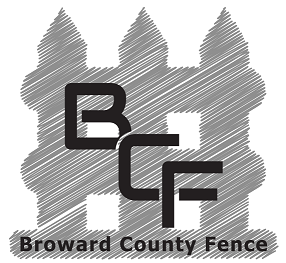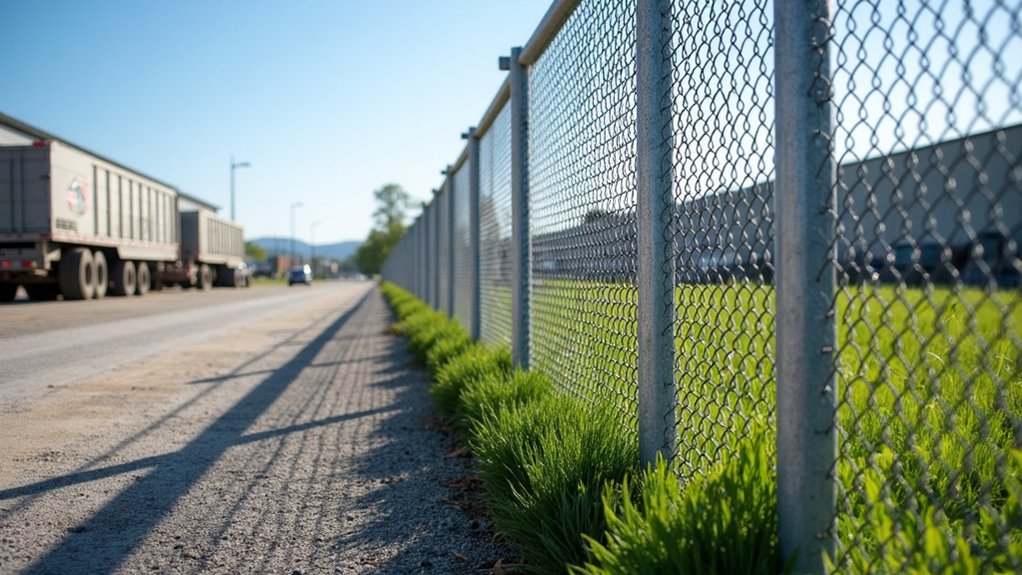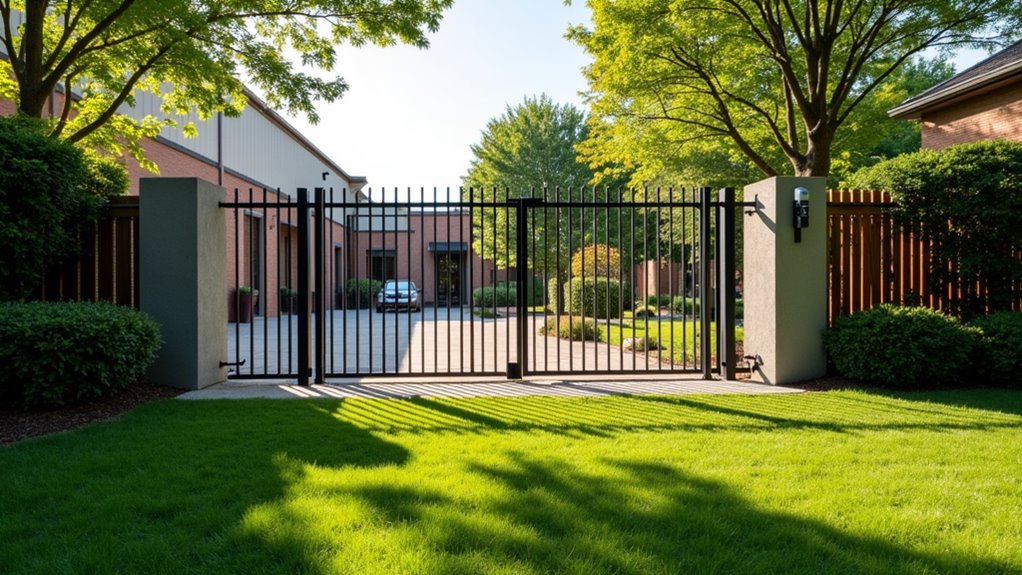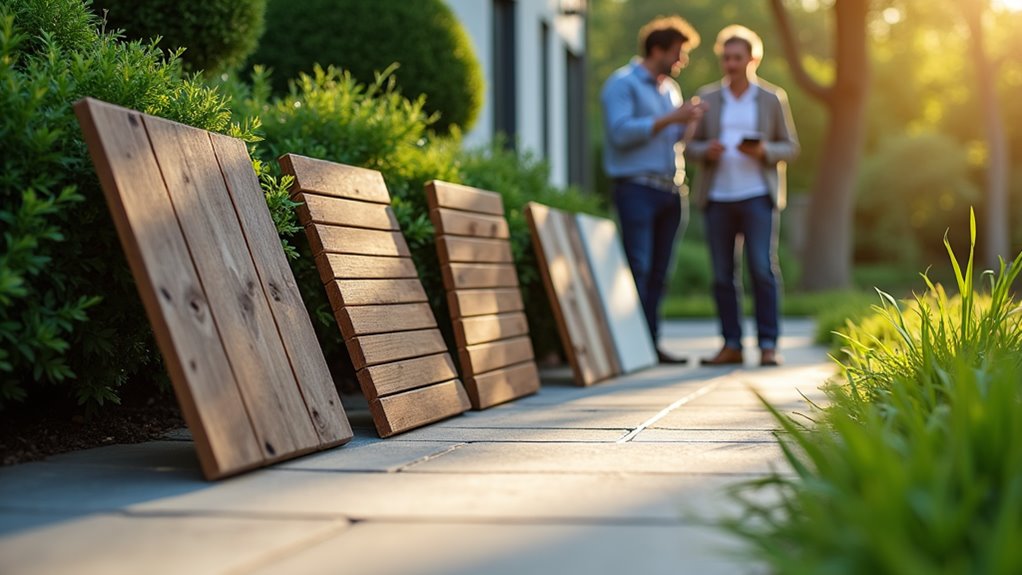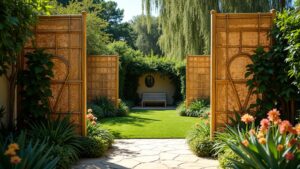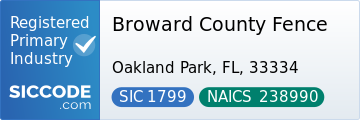To choose commercial fencing that can handle heavy traffic, prioritize materials like galvanized steel or concrete for durability and weather resistance. Ensure proper installation with reinforced posts for added stability. Be mindful of height regulations to stay compliant with local laws. Regular maintenance, such as cleaning and rust prevention, is essential for long-lasting performance. Consider the aesthetic appeal and potential future upgrades to enhance your fencing solution.
Key Takeaways
- Choose galvanized steel or concrete fencing for strong durability against heavy traffic.
- Ensure posts are properly embedded and reinforced for stability in busy areas.
- Consider low-maintenance options like vinyl to save on upkeep costs while keeping strength.
- Regularly check for damage and make quick repairs to extend the fence’s life under heavy use.
- Be sure to follow local zoning laws regarding height and materials to avoid legal issues.
Understanding Material Options for Commercial Fencing

When choosing commercial fencing, it’s important to know your material options. Steel is great for high security and can withstand harsh weather, making it a top choice for industrial settings. Additionally, metal fences can be tailored to various heights and styles, providing versatility for different applications. Aluminum strikes a balance between strength and appearance; it’s lightweight, resistant to corrosion, and can be customized to match your brand. Many manufacturers offer maintenance-free options for aluminum, which further enhances its appeal. Chain link fencing is budget-friendly and effective for security. For maximum durability and sound insulation, consider concrete or masonry. If you prefer low maintenance, composite and vinyl fencing offers both durability and style. Weighing these options will help you find the right fencing for your business needs.
Evaluating Durability and Strength Requirements
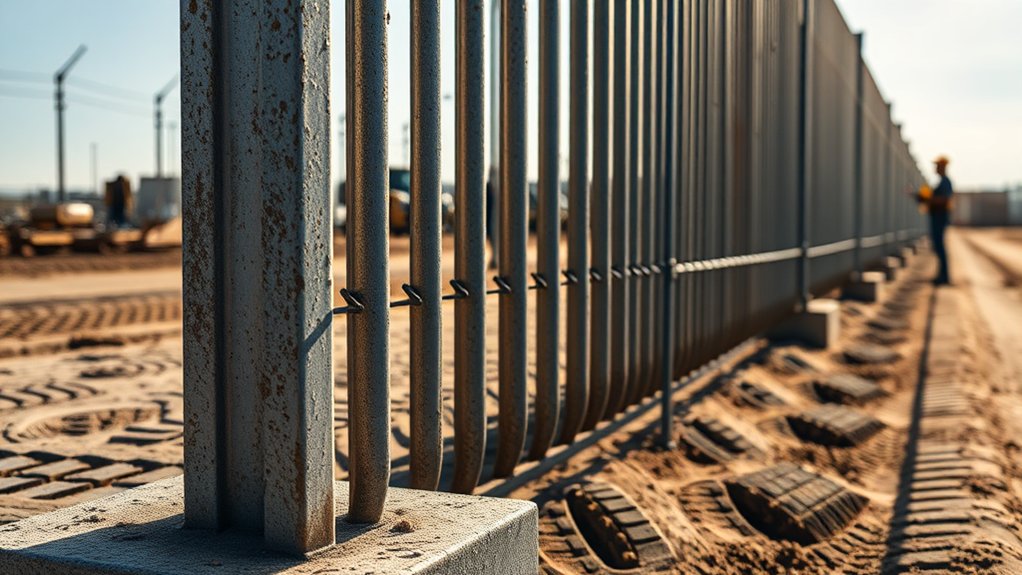
Selecting the right material for commercial fencing is crucial, but evaluating its durability and strength is where the real choices are made. Consider the following material comparisons:
| Material | Durability & Strength |
|---|---|
| Galvanized Steel | Highly rust-resistant, great for high traffic areas |
| Aluminum | Good corrosion resistance, but not as heavy-duty |
| Concrete | Excellent impact resistance and long-lasting |
For added stability, use reinforced posts and concrete footings. Ensure your fencing meets industry standards to handle impacts and environmental stress. Regular strength evaluations will keep your fencing in top condition over time, as material selection significantly impacts overall effectiveness and longevity. Additionally, understanding local ordinances can help you choose the best materials that comply with regulations and enhance durability.
Importance of Height and Installation Techniques
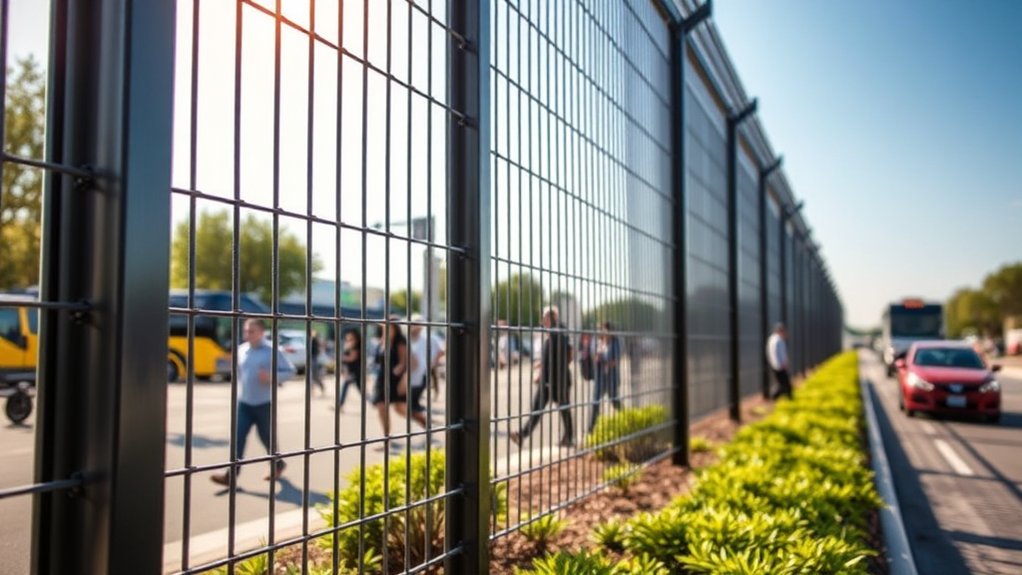
When choosing commercial fencing, the height is crucial for security and local compliance. Proper ground embedment and installation techniques are vital for stability, particularly for taller fences. Additionally, fences over 4 feet tall require a zoning permit to ensure adherence to regulations. It’s essential to consult local zoning laws to avoid potential legal issues and ensure your fence meets all necessary standards.
Optimal Fence Height
Choosing the right fence height is crucial for security, visibility, and local compliance. Here’s a quick breakdown:
| Area | Typical Height Limit | Purpose |
|---|---|---|
| Front Yard | 3-4 feet | Keeps sightlines clear |
| Backyard | 6-8 feet | Ensures privacy |
| Industrial Zones | 8+ feet | Boosts security |
| Urban Areas | Varies by regulations | Maintains uniformity |
Select a height that fulfills your security needs while following local zoning laws. Proper installation is key to ensuring your fence looks good and lasts long.
Secure Ground Embedment
To ensure your fence is strong and secure, it’s crucial to focus on proper height and installation techniques. Here’s how to achieve durability:
- Embedment Depth: Make sure your posts are buried deep enough, ideally in concrete, to withstand wind and erosion.
- Footing Design: Design footings that can support the weight of the fence and any additional loads, like snow or wind.
- Material Selection: Use sturdy materials such as steel or reinforced concrete for better stability.
- Threat Parameters: Consider potential impacts that could affect your fence, which will help you determine the best anchoring system and burial depth.
Following these steps will improve your fence’s strength and lifespan.
Effective Installation Techniques
Effective installation techniques are crucial for the performance and longevity of commercial fencing. Start by assessing traffic flow and choosing the best gate placements. Opt for strong materials like high-tensile steel to handle heavy use.
A fence height between 6 and 12 feet can boost security while still allowing visibility for drivers and pedestrians. Use tools like pneumatic drills for quick setup and ensure stability with reinforced anchoring.
Precast concrete foundations and tensioning systems add durability for high-traffic areas. Always check local regulations to avoid issues.
With proper planning and execution, you can create a strong and effective fencing solution tailored to your needs.
Maintenance Considerations for Long-lasting Fencing

Maintaining your fence is crucial for its longevity and performance. Here are some straightforward maintenance tips:
- Regular Inspections: Check for damage, wear, or rust regularly.
- Cleaning: Remove dirt and debris using appropriate cleaning methods for the material.
- Rust Prevention: Use rust-resistant paint or coatings on metal fences to prevent corrosion.
- Prompt Repairs: Fix any damage right away to avoid worsening issues.
Cost Analysis: Initial vs. Life Cycle Expenses

When choosing commercial fencing, it’s important to weigh initial costs against long-term savings.
Opting for cheaper materials may save you money upfront, but they often result in higher repair and replacement costs later on. For example, a vinyl fence might cost less initially, but it can crack and fade, requiring replacement sooner.
Initial Material Costs
Understanding initial material costs is crucial for making smart choices about commercial fencing. Here are key points to consider:
- Material Options: Your choices include wood, vinyl, aluminum, steel, and chain-link.
- Price Range: Chain-link and wood are typically budget-friendly, while vinyl and steel offer durability for a higher cost.
- Longevity: Investing in durable materials can save you money on repairs down the line.
- Visual Appeal: Decide between natural wood for a classic look or modern vinyl for a sleek appearance based on your property’s style.
Long-Term Maintenance Savings
Choosing the right materials for your commercial fencing can save you money in the long run. Durable materials like steel or vinyl require fewer repairs, which keeps costs down.
Regular inspections can help spot problems early, preventing expensive fixes later on. Knowing the lifespan of your materials allows you to budget for replacements and account for inflation.
Using technology can also simplify maintenance by giving you real-time updates on your fence’s condition. A smart approach to managing your fencing not only keeps it functional but also reduces downtime and costs, ultimately boosting your investment.
Enhancing Security Features in Fencing
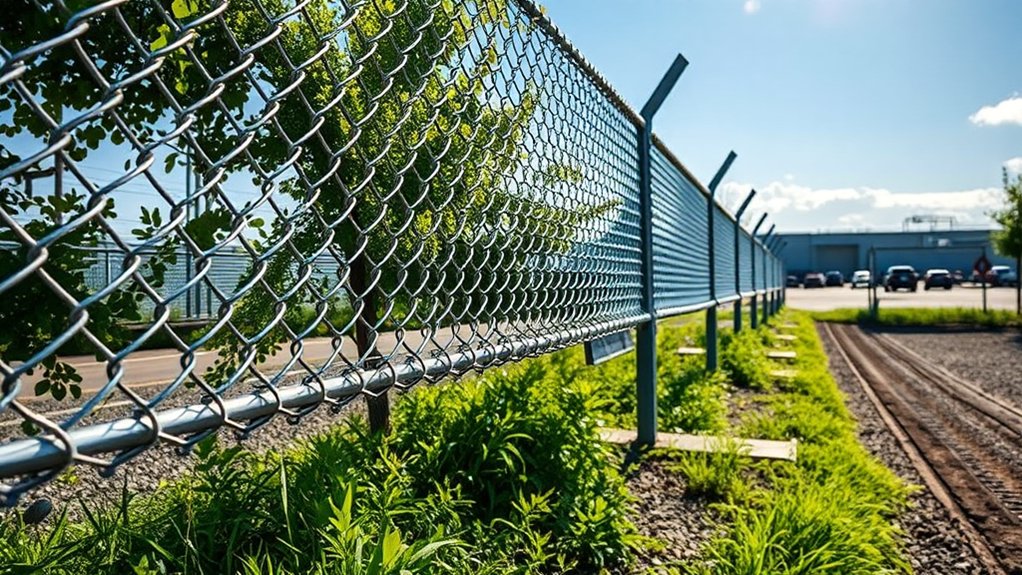
To enhance security in fencing, focus on a mix of materials, technology, and design.
Here are four key points:
- Use steel fencing for strong protection; it’s tough against intruders.
- Add automated gates to limit entry to authorized people, especially during busy times.
- Incorporate anti-climb features like pointed tops or sloped designs to prevent unauthorized access.
- Install surveillance systems such as cameras and motion sensors for real-time monitoring and quick alerts.
Compliance With Local Regulations and Standards
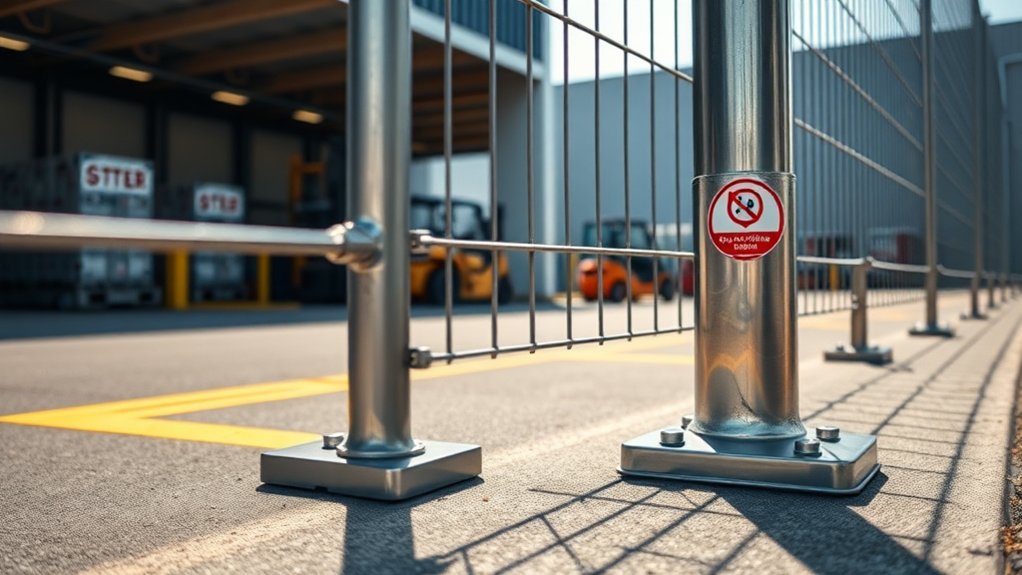
When choosing commercial fencing, it’s crucial to be aware of local zoning laws and industry standards.
These rules cover aspects like fence height and materials to ensure safety and compliance. For example, if your area has a maximum height limit of 6 feet and you install an 8-foot fence, you could face fines or be required to remove it.
To avoid these issues, do your homework and understand the regulations in your area.
Understanding Zoning Laws
Understanding zoning laws is vital for your fencing project to comply with local regulations. Here are the key points to consider:
- Height Restrictions: Most residential areas limit fences to four feet high, with even lower limits for corner lots.
- Permit Requirements: If you’re building a commercial fence, especially one over height limits, you’ll likely need a permit.
- Property Boundaries: Always ensure your fence stays within your property lines to prevent legal issues.
- Special Permits: Fences over seven feet tall may require extra inspections and permits.
Following these guidelines helps ensure your fence meets local standards and avoids problems.
Meeting Industry Standards
Meeting industry standards is crucial for any commercial fencing project to ensure safety, durability, and compliance with local regulations.
It’s important to follow OSHA standards to make sure your fencing materials, like chain link or iron, are strong enough for construction sites. Pay attention to local building codes, which often specify height and material requirements, and remember ADA accessibility rules.
Adhering to ASTM guidelines helps you choose high-quality materials, while industry benchmarks ensure safety and durability. Don’t forget to obtain necessary permits and schedule regular inspections to maintain compliance.
Implementing quality control during installation protects your investment and boosts the lifespan of your fencing, safeguarding your property and its occupants.
Assessing Aesthetic Appeal and Customization
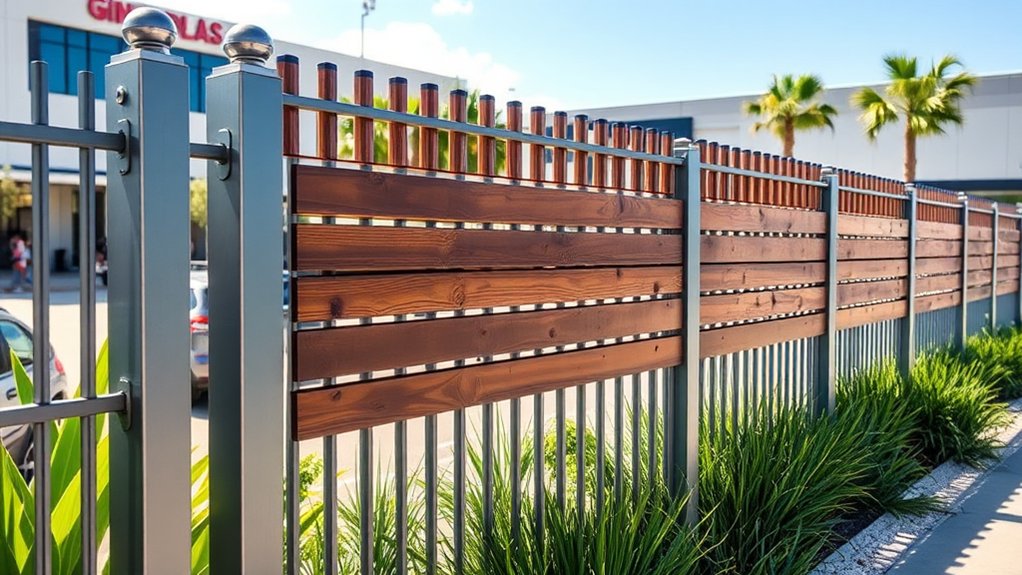
How can your commercial fencing enhance your property’s look while serving its purpose? Here are some straightforward tips:
- Choose the Right Materials: Opt for wood for a warm feel, metal for a sleek, modern look, or vinyl for a low-maintenance, clean appearance.
- Custom Designs: Create unique panel layouts that fit your needs and add visual interest.
- Add Decorative Touches: Features like finials or decorative posts can make your fence stand out.
- Match Colors: Select fence colors that complement your building’s exterior for a unified look.
The Role of Coatings and Treatments in Longevity
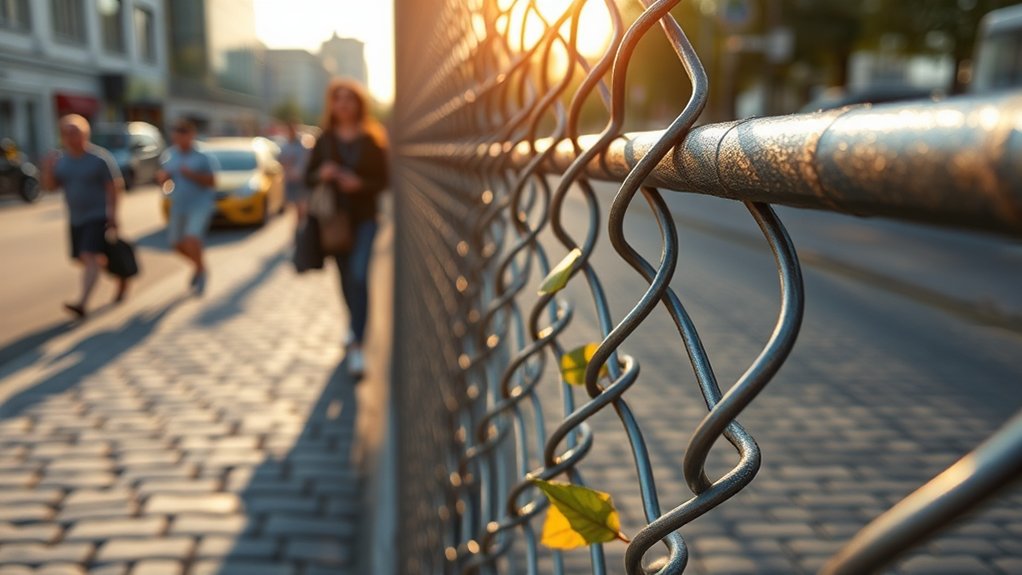
Commercial fencing serves to secure properties and define boundaries, but its durability hinges on the coatings and treatments used. The right choice can significantly boost corrosion resistance, ensuring longevity across different environments.
| Coating Type | Benefits | Limitations |
|---|---|---|
| Galvanizing | Affordable and long-lasting | Fewer aesthetic options |
| Powder Coating | Visually appealing and UV resistant | Prone to chipping |
| Zinc Aluminium | Excellent for harsh climates | Higher upfront cost |
| PVC Coating | Cost-effective and colorful | Short lifespan in tough conditions |
| Electrolytic Compatibility | Lowers maintenance for fasteners | Requires specific materials |
Selecting the right coating helps your fencing endure over time.
Choosing the Right Accessories for Added Protection
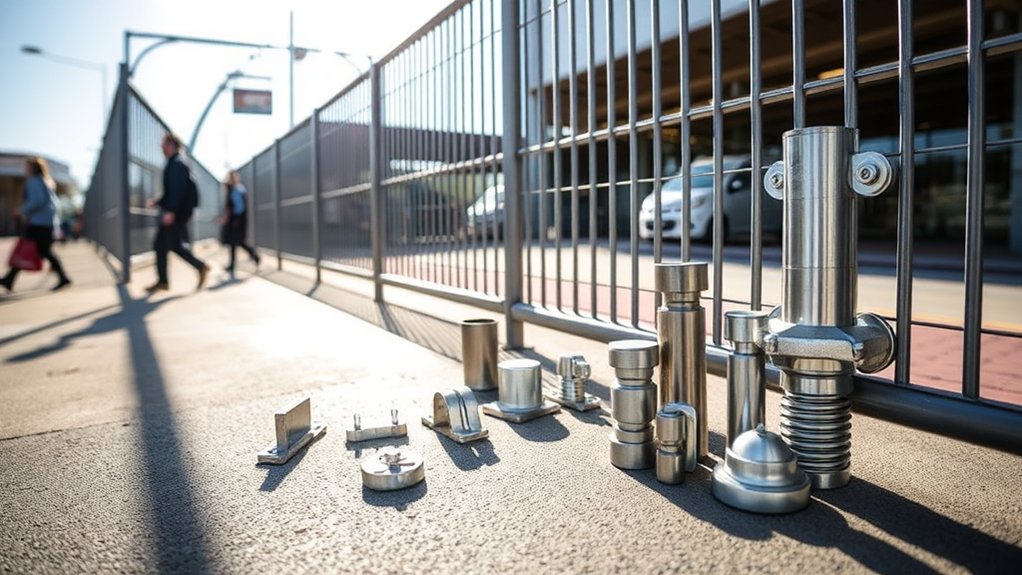
Choosing the right accessories for your commercial fencing is crucial for enhancing security and durability.
Here are four essential accessories to consider:
- Barbed Wire Extensions: These create a strong barrier at the top of your fence, making it harder for intruders to climb over.
- Anti-Climb Panels: With smaller openings, these panels prevent easy scaling, adding an extra layer of protection.
- Weighted Bases: These help secure your fence panels, keeping them stable and upright even under pressure.
- Lockable Couplers: These require special tools for disassembly, making unauthorized access more difficult.
Adding these accessories not only boosts safety but also helps prolong the life of your fencing.
Planning for Future Needs and Upgrades
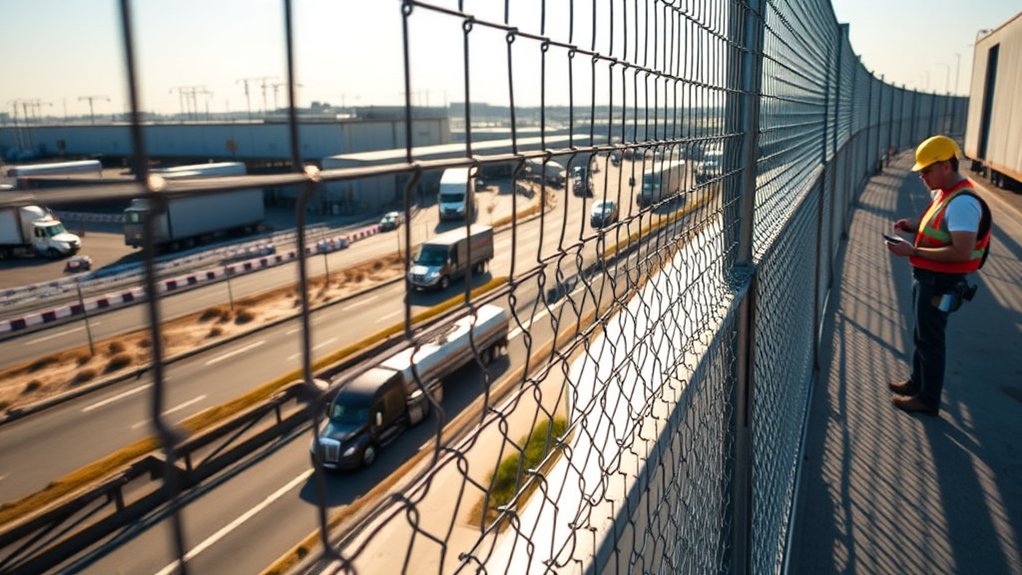
As your business grows, it’s crucial to plan for future upgrades to your commercial fencing. Choose scalable options like modular or sectional fencing, which allow for easy adjustments in size.
Ensure your current posts and gates can handle increased use or additional sections. Design your fencing with future tech enhancements in mind, such as smart barriers or CCTV mounts.
Stay updated on zoning and permit regulations to avoid compliance issues during expansions. Keep a record of design choices and maintenance plans to simplify future upgrades.
Frequently Asked Questions
How Do I Determine the Right Fence Height for My Property?
To find the right fence height for your property, start by checking local regulations, as they often dictate maximum heights. Think about your security needs—if you want to keep pets in or intruders out, a taller fence may be better. Consider how the fence looks with your home and yard. For instance, a low picket fence can be charming, while a tall privacy fence offers seclusion. Lastly, keep in mind how the fence fits into the environment, ensuring it complements your landscape.
What Are the Best Materials for High-Traffic Areas?
High-traffic areas can wear down fencing by 30%. For durability, vinyl and aluminum are top choices due to their long lifespan. Composite materials also stand out for their weather resistance and visual appeal.
Can I Install Commercial Fencing Myself, or Should I Hire a Professional?
You can try installing the commercial fencing yourself if you know the local regulations and have the right tools. However, hiring a professional ensures the job meets standards and is completed efficiently, reducing the risk of problems later on. For example, a pro can handle tricky terrain or complex designs more easily than most DIYers.
How Can I Enhance the Aesthetic Appeal of My Commercial Fence?
To improve the look of your commercial fence, choose colors that match your brand. Adding decorative features, such as custom designs or unique panel shapes, can make your fence more inviting and visually appealing to customers.
What Factors Affect the Total Cost of Commercial Fencing Installation?
When assessing commercial fencing costs, pay attention to labor and material quality. While higher-quality materials might have a higher upfront cost, they often require less maintenance and last longer, which can lead to savings over time. For instance, investing in galvanized steel might be pricier initially, but it can outlast cheaper options, ultimately benefiting your budget in the long run.
Conclusion
When selecting commercial fencing, prioritize durability, maintenance, and aesthetics. Choose materials that can endure heavy traffic and consider installation techniques that ensure longevity. For example, steel or vinyl options often outperform wood in busy environments. Investing in quality fencing now will prevent future issues, so take the time to plan your choices carefully. A well-made fence not only meets your needs but also enhances your property’s appearance.
